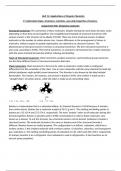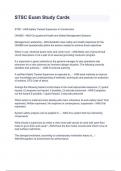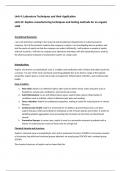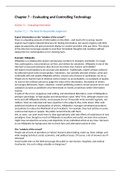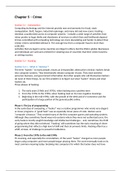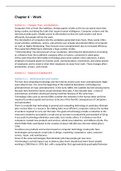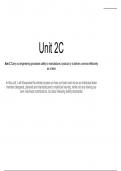C: Understand types, structures, reactions, uses and properties of isomers.
Assignment title: Designing molecules
Structural isomerism: The connection of these molecules, despite sharing the same basic formula, varies
depending on how they are put together. One straightforward example of structural isomerism with
various isomers is the structure of an alkane (C4H10). There are more structural isomers in alkane
molecules as the number of carbon atoms rises. Isomer differences in the arrangement of atoms in
molecules, without respect to spatial organisation, are referred to as structural isomers. The
phenomenon of structural isomers is known as structural isomerism. The term structural isomerism is
also used, according to IUPAC. This kind of isomerism, as contrast to stereoisomerism, entails molecules
with the same chemical formula but distinct ordering and bonding.
Types of Structural Isomerism: Chain isomerism, position isomerism, and functional group isomerism
are the three different forms of structural isomerism that exist.
Chain isomerism: Chain isomerism is the term for when a molecule's carbon chain is configured
differently from the remainder of the chain. Two or more molecules with the same chemical formula but
distinct backbones might exhibit strand isomerism. This disorder is also known by the label skeletal
dysmorphia. Two isomers, for instance, are present in butane C4H10. One of them is made up of a
"straight chain" of carbon atoms, while the other is made up of a branching chain.
Butane is a hydrocarbon that is a saturated alkane. Its chemical formula is C4H10 because it includes
four carbon atoms. Butane has a molecular weight of 58.12 g mol 1. The melting and boiling points of
butane are 133-139 K and 272-274 K, respectively. The term "butane" refers to all molecules having this
formula together. Butane is specially used in IUPAC nomenclature to refer to linear molecules, also
known as n-butane. To suit this formula, two structural isomers can be derived. Isobutane is butane's
structural isomer. The molecular formula is the same as butane even if the structural formula is
different. likewise known as methyl propane. The configuration is as follows. Isobutane, which has a
tertiary carbon, is the simplest molecule with a tertiary carbon. A colourless, odourless, and transparent
gas, isobutane is. The melting and boiling points of isobutane are 40–240 K and 260–264 K, respectively.
Its primary function is as a refrigerant. Pure isobutane is used in refrigerators. It also functions as an
aerosol spray propellant.
, Three chain isomers of pentane, C5H12, exist. If you do, it will merely be a distorted version of what is
here.
https://useruploads.socratic.org/
smeDeGEDR86qhoYisxjJ_pentane_2.png
Pentane, an organic molecule having the chemical formula c5h12, is a transparent, colourless liquid.
This chemical has a molar mass of 72.151 g/mol. Between 130.5°C and -129.1°C, it melts. The boiling
range is between 130.5 and 129.1 °C. At normal pressure and temperature, isopentane, an organic
molecule with the chemical formula C5H12, exists as a colourless liquid. 2-Methylbutane is the IUPAC
name for this chemical. This is also her four-membered branched alkane, and the second carbon atom in
the chain has a methyl group linked to it. As a result, it is a liquid that is very volatile and combustible.
More significantly, at standard pressure and temperature, it is the least dense liquid. Because of this, the
boiling point is just over room temperature. It will be simpler to boil and produce steam as a result. This
chemical has a molar mass of 72.15 g/mol. The melting and boiling points are respectively 161–159 °C
and 27.8–28.2 °C. Neopentane is a naturally occurring colourless gas with the chemical formula C5H12
that belongs to the class of organic molecules. Pentane's structural isomer. It has four methyl groups
linked to the carbon nucleus, making it a biantennary alkane. The core carbon atom of a three-
membered carbon chain contains two branches. Therefore, the IUPAC refers to this chemical as 2,2-
dimethylpropane. As a result, the molecule in question possesses a tetrahedral shape. At standard
pressure and room temperature, it can also be found as a flammable gas. As a result, on a chilly day, in
an ice bath, or when compressed at a modest pressure, it can condense into a highly volatile liquid. It
has a 9.5°C boiling point and a 16.5°C melting point.
Positional isomerism: Positional isomerism happens when the chain is unsaturated or when replaced
atoms or groups occupy distinct locations. When functional groups are positioned differently from the
atoms of the main chain, a phenomenon known as positional isomerism takes place. For instance, the
chemical formula C3H7Br has two structural isomers. Each chain's midsection and ends are joined by
bromine atoms.

